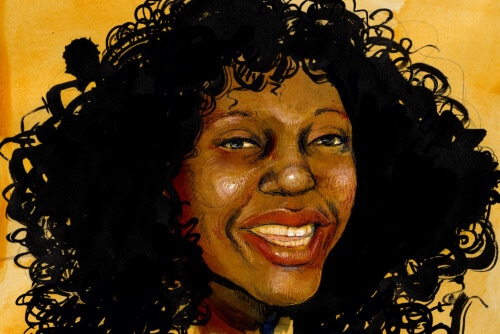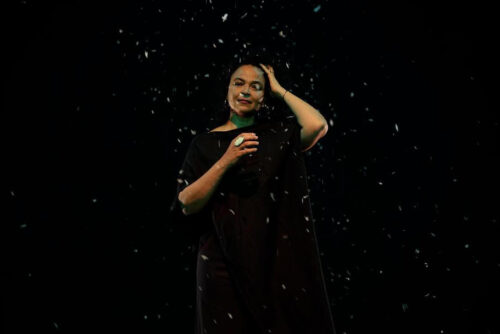In conclusion, I offer the following observations. The first, inevitably, concerns my own work on the edition because three-and-a-half years after I had tried to nail down all my annotations to the text, I received confirmation from experts in the Mushuau dialect of the Innu language and their culture that a particular term, wenastica, that had defied all my tracking efforts probably referred to a food made from the contents of a caribou stomach; this substance was rich in vitamins and was traditionally fed to starving people before more substantial foods could be digested.1 The moral of this story is that an editor’s work is never done, that white southerners adopt native words without naming their source and that only northerners—in the case of this word and text—can unravel the mystery, and that it is usually impossible to get back through time and language to Truth. Fortunately, the paperback of my edition of Mina’s book appeared in 2007 and I was able to add this tiny piece of information. My second observation is that my edition, like this article, is one part of a discursive formation about the North and, more particularly, about a woman’s place in the narrative of northern exploration. By telling her story and by putting her book back into circulation, I have reinserted her, that is, my invention of her, into this continuous narrative. My next observation is that Mina has become what I call an iconic figure within the Canadian imaginary. She stands for female success against the most challenging odds, not of the land but of public opinion; she has been transformed into a metaphor for what white southern Canadians see as the dangerous, seductive, beautiful but deadly and temperamental North. As of June 2005, the centennial, the re-enactment and the play, she became a symbol—to the northerners, the “Liveyers” of Labrador—of home and of qualities they value highly: reverence for the land, respect for elders, especially native elders, conjugal love and fidelity, courage without complaint, survival, and community. However, with the April 2007 television broadcast of Vic Pelletier’s film “Mina et Hubbard: L’amour qui fait voyager,” those qualities of female success and love of the northern landscape were extended beyond Labrador to the entire nation: Mina’s story becomes a story about “Canada en amour.”
Finally, I can say with conviction, that my work, like the work of Mina’s biographer Anne Hart, whose book was launched at the centennial, has added layers to the invention of Mina as smart, feisty, successful, passionately devoted to Canada, its North, and to her own self-discovery as an explorer. She was a woman of her time in many ways, but she was also ahead of her time, and this contributes to her lasting appeal. Almost one hundred years ago, in her review of A Woman’s Way, Jean Graham expressed the hope that the “Canadian public may someday honour a woman whose claim to recognition rests on pluck and brains” (471). And we have honoured her, albeit not by recounting the expedition facts because her map has been superseded, the landscape she travelled has been altered irrevocably, overgrown with dense brush, flooded to build hydro-electric dams, and over-flown by military aircraft, and the Innu people have been forced into unhealthy settlements. We honour her by continuing to tell her story, by imagining ourselves following in her footsteps, by inventing her as something of a northern icon striding down her Labrador trail, over the hills, and on to the beckoning waters of an imagined Lake Michickamau.
Works Cited
Baikie, June. “Mina’s Song.” Unpublished play script. 2005.
Davidson, James West and John Rugge. Great Heart: The History of a Labrador Adventure. Montreal: McGill-Queen’s University Press, 1988.
Grace, Sherrill. Making Theatre: A Life of Sharon Pollock. Vancouver: Talonbooks, 2008.
——. Canada and the Idea of North. 2001. Montreal: McGill-Queen’s University Press, 2007.
——. “Mina’s Song” and the Inventing of Mina Benson Hubbard.” Canadian Theatre Review 128 (Fall 2006): 115-20.
——. Inventing Tom Thomson. Montreal: McGill-Queen’s UP, 2004.
——. Ed. A Woman’s Way Through Unknown Labrador by Mina Benson Hubbard. 1908. Montreal: McGill-Queen’s University Press, 2004.
Graham, Jean. “Woman’s Sphere.” Canadian Magazine 31 (September 1908): 468-71.
Hart, Anne, with Roberta Buchanan and Brian Greene. The Woman Who Mapped Labrador. Montreal: McGill-Queen’s University Press, 2005.
Johnstone, Tiffany. “The Language of Faith and American Exceptionalism in The Lure of the Labrador Wild.” Newfoundland and Labrador Studies 21.2 (2006): 1719-26.
Klein, Clayton. Challenge the Wilderness: The Legend of George Elson. Fowlerville, MI: Wilderness Adventure Books, 1988.
“Mina et Hubbard: L’amour qui fait voyager.” Canada en Amour. Productions Vic Pelletier. April 2007. www.pvp.ca/cea.
Nora, Pierre. “Between Memory and History: Les Lieux de Mémoire.” Trans. Marc Roudebush. Representations 26 (Spring 1989): 7-25.
Pratt, Alexandra. Lost Lands, Forgotten Stories: A Woman’s Journey to the Heart of Labrador. Toronto: HarperCollins, 2002.
Roy, Wendy. Maps of Difference: Canada, Women, and Travel. Montreal: McGill-Queen’s University Press, 2005.
Silvis, Randall. Heart So Hungry: The Extraordinary Expedition of Mina Hubbard into the Labrador Wilderness. Toronto: Knopf, 2004.
- The word given by Mina, transcribing her dead husband’s journal, is “wenastica” (see A Woman’s Way 186, 250). I am immensely grateful Dr Iain Taylor, Dr Kate Frego, Dr Stephen Clayden, and finally Lorne Hollett, editor of Them Days, for almost certainly identifying this mysterious word. An Innu elder, Peter Armitage, thinks the word is an Anglicization of the Mushuau word “Uinashtakai” which, when said aloud, could sound like wenastica. The term refers to a soup made from the contents of the caribou stomach mixed with the animal’s blood, returned to the stomach, tied off and allowed to dry into a cake-like substance resembling a blood pudding. When boiling water is added with a bit of lard, a soup is made that is gentle and nourishing for a starving human being. The context for Leonidas Hubbard’s use of the word suggests that he is in fact speaking of this substance. [↩]



